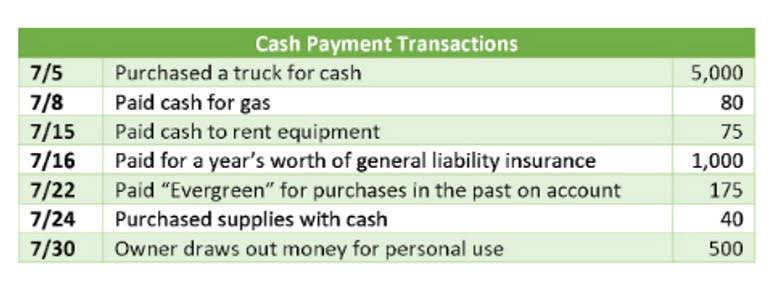
Many misconceptions exist in this area, but to deliver accurate, transparent financial statements and returns, you must have a comprehensive understanding of the nonprofit accounting process. While the statement of cash flows, or cash flow statement, may be a bit difficult to prepare, it is an important financial statement to be read. The Statement of Cash Flows is typically prepared on an annual basis, alongside other financial statements.
- For nonprofit organizations, this statement is essential as it highlights how effectively the organization manages its cash to fulfill its mission and maintain operational stability.
- It is an important indicator of the organization’s ability to generate cash from its core operations.
- The scholarship foundation’s details fit well with what donors expect to hear from the organization.
- As we conclude, remember that the ability to effectively manage and analyze cash flows is not just a financial skill—it’s a strategic asset that can define a nonprofit’s ability to thrive and make an impact in its community.
- This can include things like cash from the sale of assets, cash from the repayment of loans, and cash from the issuance of new debt.
- Many not-for-profit entities receive donations for which the donor has placed a stipulation that they must be used for long-term purposes, such as the purchase of property and equipment or for endowment funds.
Key Types of Transactions:

Effective cash flow management is crucial for nonprofit organizations to ensure they have the necessary funds available to meet their mission-critical objectives. This section of the article will outline strategic recommendations for https://www.bookstime.com/ managing cash effectively and discuss the importance of regular cash flow analysis and forecasting. The cash flow statement helps nonprofit managers make informed financial decisions, ensuring that there is enough liquidity to meet obligations and support ongoing programs. Throughout this article, we’ve explored the critical importance of the Statement of Cash Flows for nonprofit organizations. This financial statement is not just a record of cash transactions but a strategic tool that offers deep insights into the financial health and operational stability of a nonprofit. By leveraging detailed cash flow information, nonprofits can navigate financial challenges more effectively and capitalize on opportunities to advance their missions.

What is the purpose of the Notes to the Financial Statements?

Accounting Standards Updates (ASUs) issued by the Financial Accounting Standards nonprofit statement of cash flows Board have additional implications for nonprofits. Now you know the basics of the five essential financial reports that every nonprofit needs. The definition of a financial statement is a simple report that can be pulled together monthly (or as-needed) to give you a view of your financial health.

Example: Community Health Initiatives’ Cash Flow Statement
This financial statement reports the revenues and expenses and the changes in the amounts of each of the classes of net assets during the period shown in its heading. This statement is issued by a nonprofit instead of the income statement issued by a for-profit business. Proper preparation is essential in creating an accurate and meaningful statement of cash flows using the indirect method. Before drafting the statement, nonprofit financial managers need to gather pertinent financial documents and identify the appropriate starting point for the statement. This foundational work ensures that the cash flow statement reflects a true and clear picture of the organization’s liquidity over the period.
Did you know that websites like Charity Navigator and GuideStar use this report to rate your organization? Beyond helping your organization meet legal requirements, they also promote transparency and help you evaluate your performance. We also use different external services like Google Webfonts, Google Maps, and external Video providers. Since these providers may collect personal data like your IP address we allow you to block them here.
Nonprofit Statement of Cash Flows
In summary, the net assets section of nonprofit financial statements provides valuable information about the organization’s financial health and the availability of funds. Understanding the different categories of net assets, including unrestricted and restricted, is essential for effective financial management and decision-making. For nonprofits, the accuracy of cash flow classification is not just a matter of regulatory compliance but a cornerstone of financial transparency and effective management. Proper classification into operating, investing, and financing activities helps stakeholders—including donors, grantmakers, and regulatory bodies—understand where the money comes from and how it is used. Additionally, accurate data is vital for internal management to make informed decisions regarding budgeting, fundraising strategies, and long-term planning.
Under the accrual method of accounting, expenses are to be reported in the accounting period in which they best match the related revenues. If that is not clear, then the expenses should be reported in the period in which they are used up. If there is uncertainty as to when an expense is matched or is used retained earnings up, the amount spent should be reported as an expense in the current period. The items that cause the changes in Net Assets are reported on the nonprofit’s statement of activities (to be discussed later). However, there are nonprofits that qualify as tax-exempt but their donors’ contributions do not qualify as charitable deductions (although they may qualify as business expenses).
